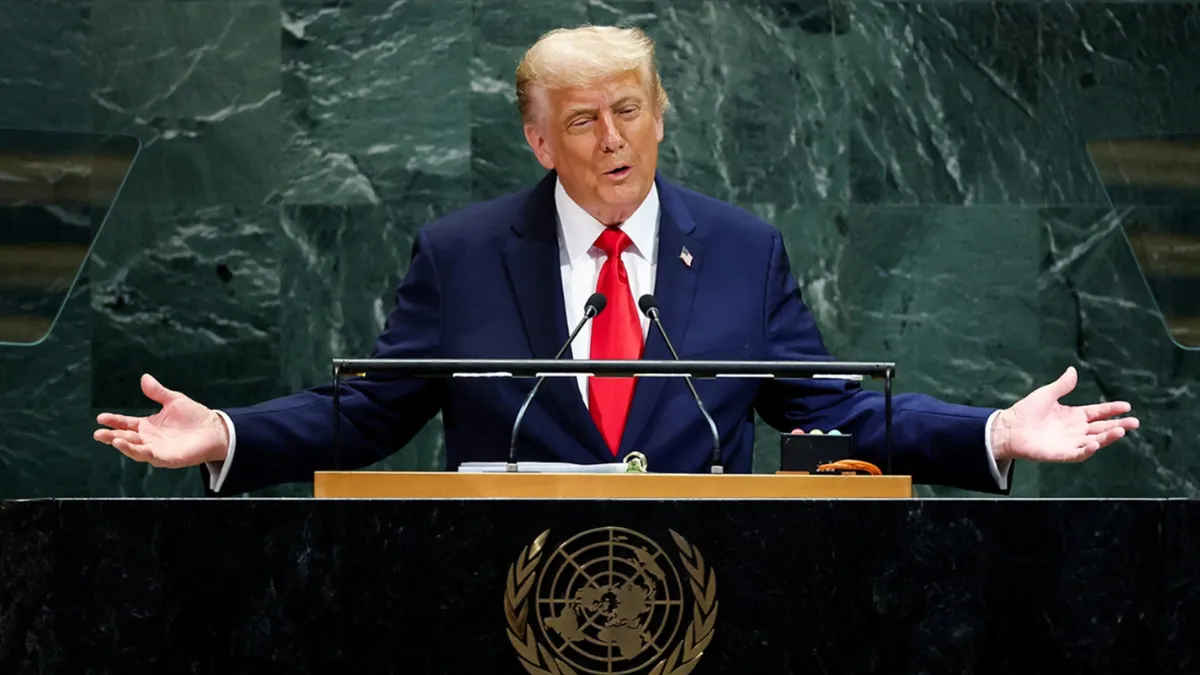Washington, D.C. – US Shutdown Begins: A political deadlock in the U.S. Senate has led to another government shutdown after lawmakers failed to pass a crucial funding bill. President Donald Trump’s administration struggled to secure enough votes, leaving federal employees, government services, and millions of citizens facing uncertainty.
On Tuesday night, the Senate voted on the funding bill proposed by the Republicans. The result was 55 votes in favor and 45 against. However, to pass, the bill required at least 60 votes. This shortfall triggered the shutdown, which officially began at 9:30 a.m. Indian Standard Time on Wednesday.
Why Did the Funding Bill Fail?
The U.S. Senate consists of 100 members – 53 Republicans, 47 Democrats, and two independents. To push the bill through, President Trump’s Republican Party needed some Democratic support. But Democrats voted against the proposal, demanding stronger provisions for healthcare subsidies.
Interestingly, one Republican senator opposed the bill, while two Democratic senators voted in favor of it. This cross-party movement wasn’t enough to reach the 60-vote threshold.
Earlier, Democrats had presented their own funding bill, which included provisions to expand the Affordable Care Act subsidies. That proposal also failed, receiving 47 votes in favor and 53 against, with Republicans voting against it.
The Root of the Dispute: Healthcare Subsidies
The deadlock largely revolves around healthcare. Democrats want to expand subsidies for Obama-era healthcare programs, arguing that it would help millions of Americans access affordable medical services. Republicans, however, are worried about the rising costs. They believe that if subsidies increase, government spending will skyrocket, putting pressure on other key areas such as defense, education, and infrastructure.
A White House meeting between President Trump and Democratic leaders earlier this week failed to resolve these differences, setting the stage for the shutdown.
How the U.S. Budget System Works
The U.S. government operates on a fiscal year that begins on October 1. During this period, Congress must approve a new budget or at least pass a temporary funding bill. Without this, government agencies lose the authority to spend money, forcing them to shut down non-essential operations.
This year, as October began without an approved budget, the shutdown was automatically triggered.
Impact of the Shutdown
As the US shutdown begins, nearly 900,000 federal employees now face the risk of being placed on unpaid leave. While essential services like emergency healthcare, border security, and air traffic control will continue, many day-to-day functions of government agencies will be halted.
Employees at federal offices, national parks, museums, and administrative departments will either work without pay until the crisis ends or be sent home on unpaid leave. President Trump even warned that prolonged shutdowns could lead to deeper staff cuts.
This is not the first time the U.S. has faced such a crisis. Over the past 50 years, the country has gone through 20 shutdowns. Trump’s previous term also saw three shutdowns, with the 2019 episode lasting a record 35 days and costing the U.S. economy an estimated $25 billion.
Lessons from Past Shutdowns
Past shutdowns have shown how disruptive such political standoffs can be:
- 2013 Shutdown: On the Canada–U.S. border, which stretches nearly 8,900 kilometers, only one official was left in charge of monitoring during the shutdown. The rest of the staff had been placed on leave.
- 2013 Shutdown (Cemeteries): American war cemeteries across Europe, maintained by the U.S. government, were closed due to lack of funding.
- 2018 Shutdown (Air Travel): Many federal employees stopped reporting to work at airports because salaries were withheld. This led to canceled flights and nationwide disruptions.
- 2018 Shutdown (FBI Warning): The FBI Director publicly warned that lack of funds was affecting critical investigations and counterterrorism operations.
These examples underline the seriousness of shutdowns and their far-reaching consequences, not just for government workers but for national security, international responsibilities, and the economy.
Also read: Philippines Earthquake Today: Powerful 6.9-Magnitude Quake Rocks Central Region
Political Fallout
For President Trump and his Republican Party, the shutdown highlights the difficulty of governing in a divided political environment. Democrats see the moment as leverage to push their healthcare agenda, while Republicans argue that fiscal discipline must be maintained to prevent overspending.
With neither side willing to compromise, the American people remain caught in the middle.
What’s Next?
Negotiations are expected to continue in the coming days. Lawmakers may attempt to pass a temporary funding measure to reopen government offices, but reaching bipartisan agreement on healthcare spending remains the biggest hurdle.
Until then, government employees, citizens relying on federal services, and even international partners of the U.S. will feel the ripple effects of the shutdown.
Also read: TrumpRx: Trump Launches Discount Drug Website with Pfizer Deal to Lower Prices
Conclusion
The latest political standoff has once again brought America’s budgeting system into the spotlight. As the US shutdown begins, it raises serious questions about how long this deadlock will last and what impact it will have on the U.S. economy and global confidence.
While healthcare remains at the heart of the debate, the immediate reality is that hundreds of thousands of workers are facing uncertain paychecks, and millions of citizens are bracing for disruption in public services. Unless lawmakers find common ground soon, history may remember this shutdown as yet another costly chapter in America’s ongoing political divide.
















